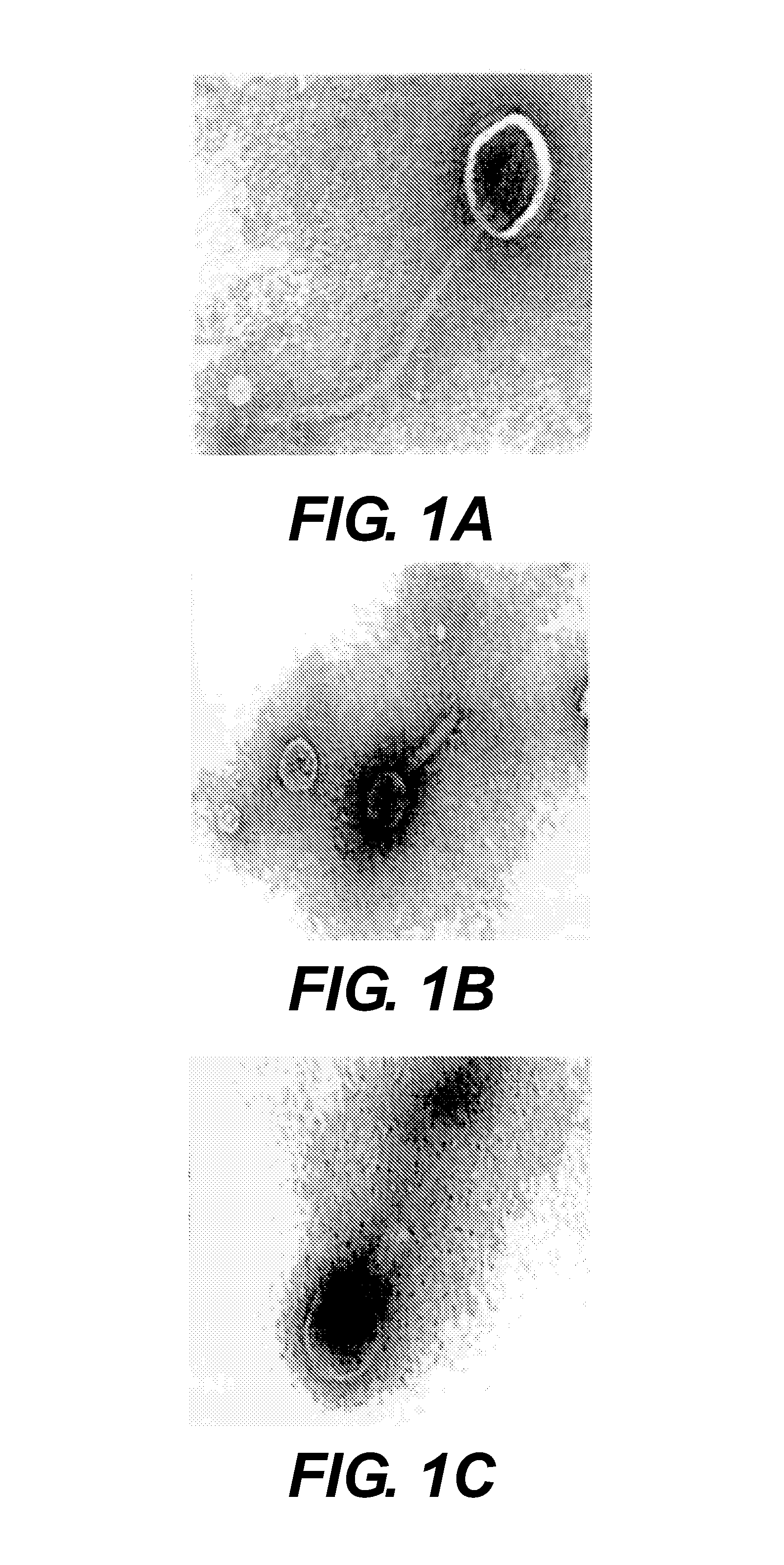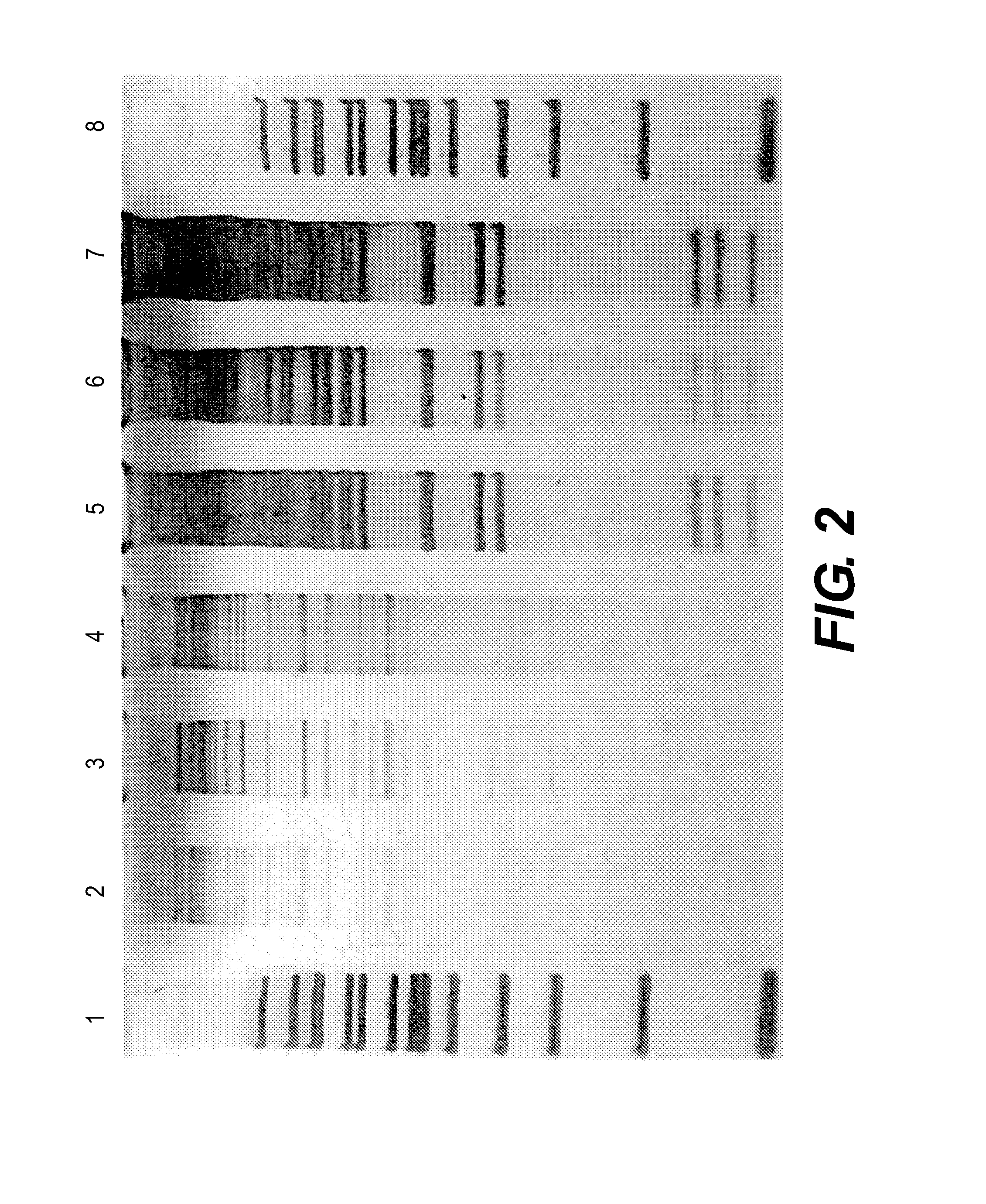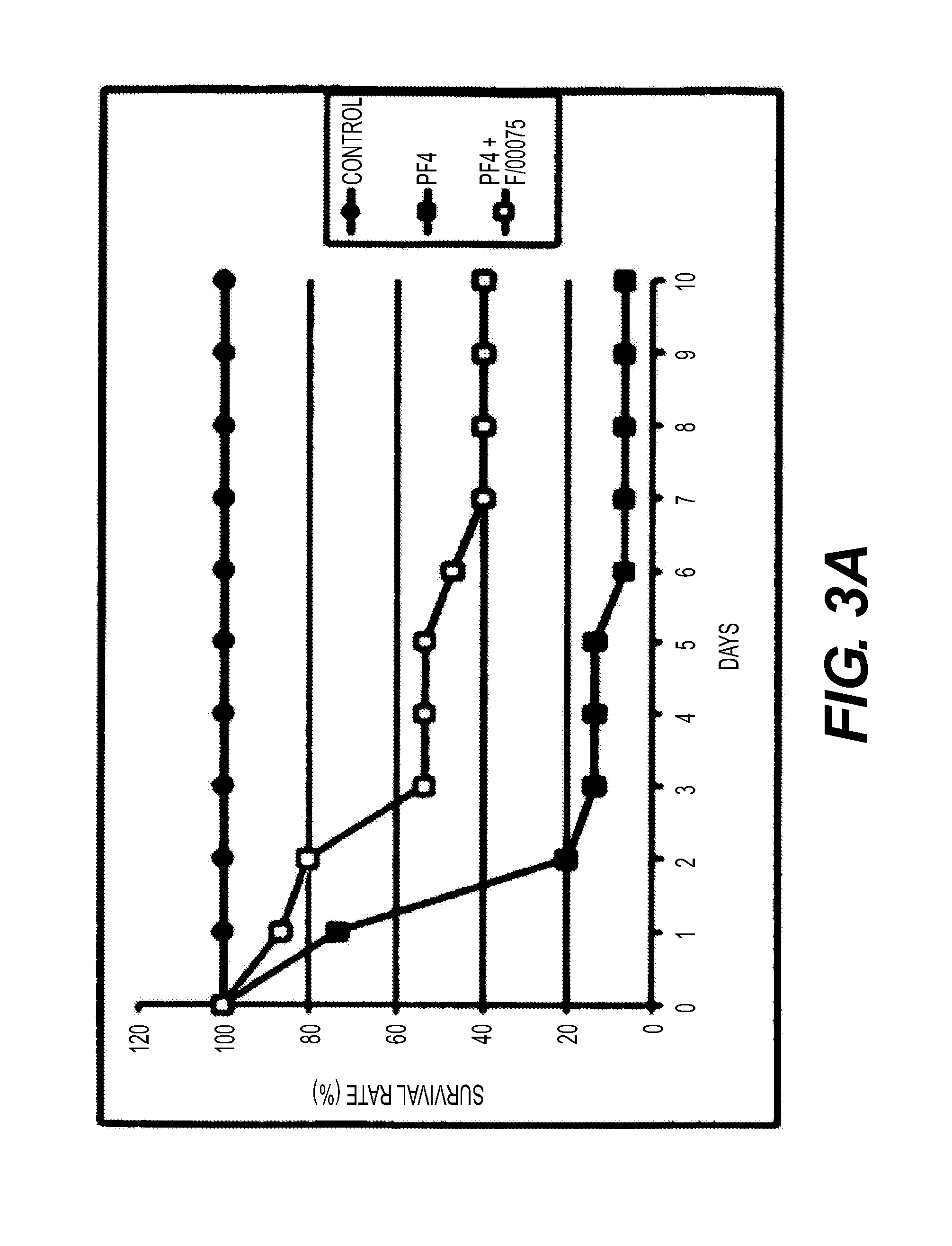Bacteriophages useful for the prophylaxis and therapy of vibrio anguillarum
a technology of vibrio anguillarum and bacteria, applied in the field of aquaculture, can solve the problems of ineffective current treatment, inability to completely prevent vibriosis, and in species important for aquaculture, and achieve the effect of prophylaxis, control and/or treatmen
- Summary
- Abstract
- Description
- Claims
- Application Information
AI Technical Summary
Benefits of technology
Problems solved by technology
Method used
Image
Examples
example 1
Isolation of Phages
[0075]The phages were isolated from mussels and clams from Santiago's central market. The soft tissue of the shellfish was homogenized and centrifuged, and then the supernatant was diluted ten times and filtered using filters with pores of 0.22 μm. One hundred μl of the filtrate was then used to detect the presence of phages following the standard protocol of double agar using a PF4 strain of Vibrio anguillarum as host.
[0076]Four phages were isolated originating from mussels and clams.
example 2
Characterization of Phages
[0077]The storage mode was determined and the presence of membranes of the isolated phages. To determine the type of storage, aliquots of phage were incubated for a week at −80° C. and 4° C. and their titer was compared with the original stock. The presence of phage membrane was determined in the same way, by exposing the phages to chloroform. The sensitivity to chloroform indicates that the phages could present an external membrane. Therefore an aliquot of each phage was mixed with a drop of chloroform and then its titer was compared to the original stock. The phages were considered sensitive when their titer was reduced more than 3 orders of magnitude.
[0078]The values determined are shown in Table 2 below.
[0079]The morphological structure of some of the bacteriophages isolated through transmission electron microscopy (FIG. 1) was determined. All the phages show a binary symmetry with head and tail. The images show phages that belong to the Siphoviridae fa...
example 3
Challenges
[0083]The phages used in the challenges were selected according to their stability over time, type of storage and their lytic capacity.
[0084]The phages F / 00074 and F / 00075 were selected to execute the challenges in fish under laboratory conditions.
[0085]A specific number of fish of the Salmo salar species were maintained in tanks with 15 liters of water at 1% of NaCl. Three conditions were used for each challenge:[0086]1) Control: only fresh culture medium is added to the tank.[0087]2) Bacteria: A bacterial culture of the PF4 strain of V. anguillarum is added to a known concentration.[0088]3) Phage+Bacteria: The same bacterium and amount of condition 2 is added and a phage is also added at a specific concentration.
[0089]In some cases a fourth condition was added associated with tanks where only the phage was added.
[0090]Fish mortality was monitored daily.
[0091]The bacterium used originates from a bacterial medium in exponential phase.
[0092]To produce the phage, a culture o...
PUM
 Login to View More
Login to View More Abstract
Description
Claims
Application Information
 Login to View More
Login to View More - R&D
- Intellectual Property
- Life Sciences
- Materials
- Tech Scout
- Unparalleled Data Quality
- Higher Quality Content
- 60% Fewer Hallucinations
Browse by: Latest US Patents, China's latest patents, Technical Efficacy Thesaurus, Application Domain, Technology Topic, Popular Technical Reports.
© 2025 PatSnap. All rights reserved.Legal|Privacy policy|Modern Slavery Act Transparency Statement|Sitemap|About US| Contact US: help@patsnap.com



